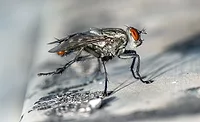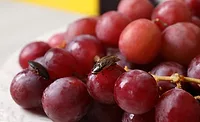Are You Prepared for the Upcoming Pest Season?

With the heat and humidity of summer hitting, it can be difficult to think about those invasive fall pests that will start popping up later in the season. However, if you start planning now, you can reduce pest pressures, prevent them from invading, and (maybe most important!) protect your products. Most facilities have a third-party vendor to handle basic pest control, but there are still things you can do to minimize pest impacts. So where do we start?
So far, it’s been a good year if you are a rodent. Temperatures have been warm, food supplies are available, and there haven’t been many major weather events (floods, droughts, extreme temps) to stress out populations. When conditions start to cool in the late fall, all those rodents are going to be looking for a safe, warm space, with the food your site is producing, to overwinter. Don’t let this be your facility! Talk with your pest management professional and ask whether they are noticing a higher population of rodents around structures. Where that is happening, sanitation and exclusion are always the first steps. Along with that, ask if they need to start putting out more traps and bait stations to reduce the overall populations. Look at the exclusion that needs to happen. A full-grown rat can fit through an opening the diameter of a quarter, or about 2.4 cm. Mice can squeeze through a hole the size of a dime, about 1.7 cm. If all those openings get addressed now, you can keep the rodents and even other pests out when they are trying to get inside.
Don’t forget to look up. Roof rats are going to enter at the top so take advantage of a sunny summer day to get up on the roof and inspect up high. Look for openings and trees and branches touching the structures that rats use as pathways.
I think lady beetle larvae look like little dragons, and there are plenty of them around right now! Those larvae grow up into adult lady beetles that are going to be looking for that safe warm spot to overwinter. You will start seeing them congregating outside in the fall, gathering inside in the winter, and trying to escape structures in the spring. Lady beetles are very beneficial, so we don’t want to eliminate them from the outside where they are munching on aphids and other plant pests. Even though they won’t attack the food being produced, they are still unwanted guests on the inside. Doors and windows are the obvious entry points, but pay attention to vents, air-handling units, and electrical and cable lines entering the structure. Once the beetles get in, there’s not much to do except vacuum up the ones you can see. So a bit of prevention now can save you some stress over the winter.
Don’t forget there are other insects like stink bugs, boxelder bugs, cluster flies, and more that congregate in big numbers in the fall.
Wasps are another pest that, if dealt with early, can save you some headaches later in the season. Plus, it can save the employees from getting stung if they encounter them on-site. Dealing with some of those budding wasp colonies now can save some visits in the fall and even into next year. Wasps present two issues at the end of the fall. First, colonies have had all season to build up so there are lots of adult wasps out there, potentially interacting (negatively!) with people. Second, those colonies are now producing lots of new queens to start new colonies next year. If you can find the colonies now, they can be treated and eliminated. You can also look for conducive conditions, like fruit trees. Towards fall, when those trees start dropping their fruit, they attract lots of wasps. If you have trees or bushes on your site that have some type of fall fruit, either cut them back or clean up those fruits as soon as they drop so they don’t provide a food source for the wasps. Look up on eaves and corners to find nests and have your pest control provider safely remove them.
Don’t forget that the trash dumpsters and bins outside can be a powerful draw to wasps. They are looking for sweet liquids. Have dumpsters emptied regularly, clean around the dumpster areas, and have outside employee areas cleaned of drink containers and other trash that could be attractive.
Looking for quick answers on food safety topics?
Try Ask FSM, our new smart AI search tool.
Ask FSM →
The old adage of “an ounce of prevention is worth a pound of cure” is true when it comes to pest management. Even though most of these pests aren’t “food” pests, they are not welcome inside a food facility. Don’t depend on your pest control company to find all the issues; perform inspections that focus on exclusion (keeping them out) and sanitation (not providing them food) so your site can remain pest free for the next season. Reducing populations now, in the summer and early fall will make for fewer problems later.
Want to see how small of a space a rat needs to squeeze into a site: https://www.youtube.com/watch?v=r6dDCgX4R5o&t=6s
For more on lady beetle “infestations”, check this out: https://ohioline.osu.edu/factsheet/ENT-44
Additional information on bees and wasps in the fall: https://phys.org/news/2012-10-bees-wasps-busy-autumn.html
Chelle Hartzer, M.Sc., BCE, is a consulting entomologist at 360 Pest and Food Safety Consulting and has been helping clients solve complicated pest issues for over a decade. She holds an M.Sc. in entomology from Kansas State University and is a board-certified entomologist (BCE) in urban and structural entomology. She is also a Preventive Controls-Qualified Individual and earned her Lean Six Sigma Green Belt.








